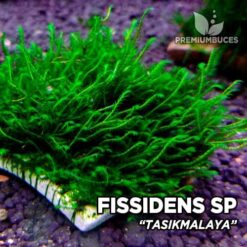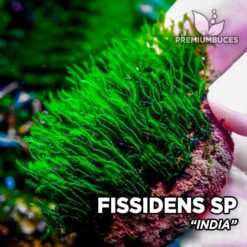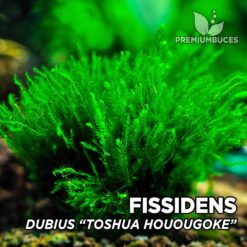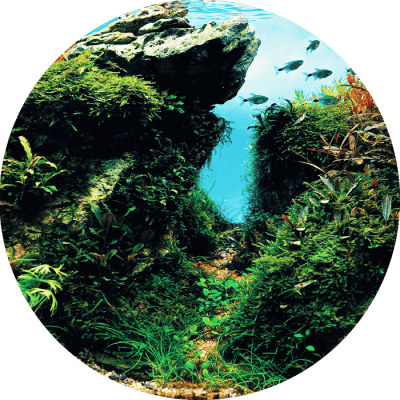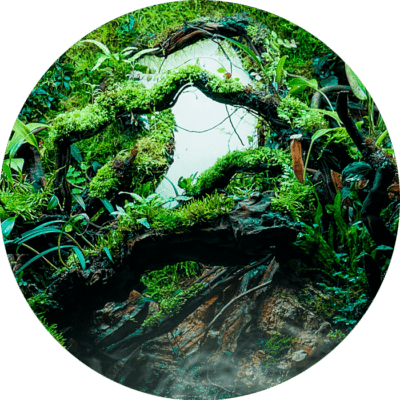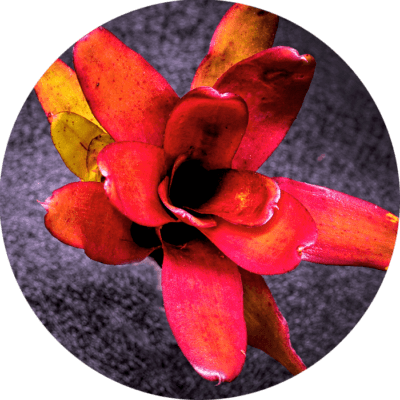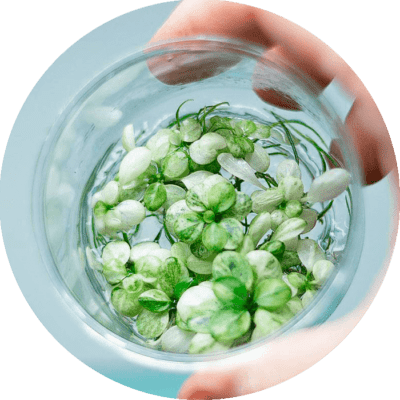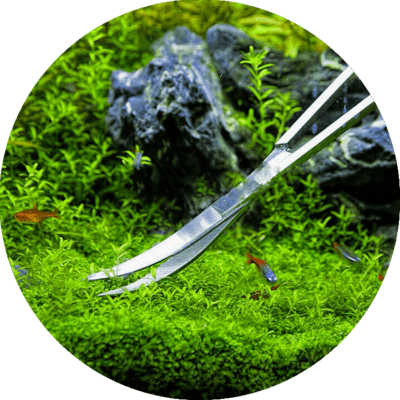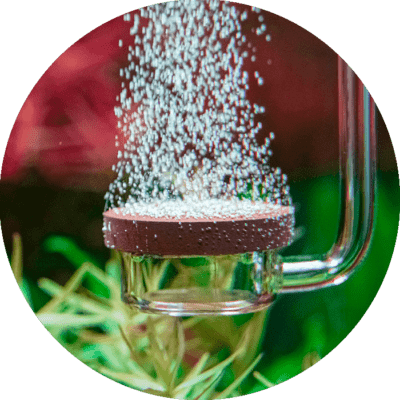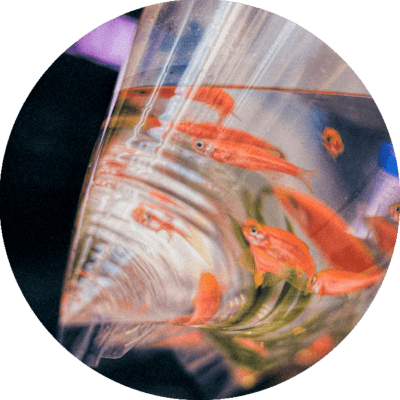Fissidens are mosses with a very interesting appearance and characteristic for their “feather” shaped leaves. Due to their low requirements, Fissidens are a perfect option for any Shrimp.
FISSIDENS IN AQUARIUMS
Mosses belonging to the family fissidentaceae and its genus includes up to 400 different species of moss. Currently there are many species that, under its trade name, are kept in aquariums and they are very popular in shrimp aquariums for your needs undemanding. The best known species: Fissidens Fontanus "Phoenix Moss" is a water moss which has become a widely used species among Aquascaping fans. Phoenix Moss is a lush, fluffy, deep dark green plant that adheres easily to surfaces and substrates. Like most mosses, can provide a good hiding place for fry and baby shrimp. But, apart from this, the genus Fissidens It is found in different parts of the world and collects many other species such as: Miroshaki, Vietnam , Nobilis o mini taiwan, which have become small miniature jewels to collect for aquatic plant enthusiasts.
DESCRIPTION
The Fissidens They are generally dark green and often vary in shades lighter or darker depending on how old you are. Younger leaves appear light green, but will change to olive green as time passes. The branches usually grow long and have small, pointed, thin leaves. All the leaves are attached to the stem in a very precise pattern. The difference between size, length and thickness of the sheets is the essential characteristic that distinguishes species most used in aquarium hobby.
Many Fissidens species most sought after by collectors are of a very small size, so keeping them in small nano aquariums can be a very good option.
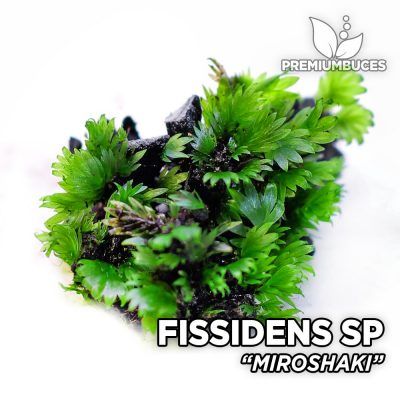
FISSIDENS MOSS GROWTH
Like others moss, the Fissidens have no real roots. Instead, they have small, hair-shaped, brownish "rhizoids" that help them adhere to surfaces or objects. It then uses its leaves and stems to be able to absorb all the nutrients it needs to survive.
Secondary stems will develop rhizoids at their base and, when firmly anchored to the substrate, detach from the primary plant to form a clonal plant.
In nature Fissidens use spores to reproduce. These spores form in a distinctive capsule called sporangium. When the sporangia reach maturity and open, the spores are deposited in a mother plant where they manage to reproduce. This process occurs continuously on its own and ensures that the moss remains bright green and abundant. In an aquarium the best way to reproduce and spread these mosses it is from the division and anchoring of the stems, if we want the Fissidens to expand horizontally to cover a surface we can knock down the stems and fix them with the help of fishing line to the surface itself, from these lying stems they will grow New shoots in vertical position, from each stem that we knock down normally can grow between 3 and 5 shoots depending on the size and species of moss.
The Fissidens benefit from small contributions of potassium and micronutrients, although it is not necessary.
So as not to slow down their growth it is recommended to put them in a place in the aquarium where they receive more lightThus, we will achieve progressive growth, especially in the first weeks of adaptation. If we want to prevent the appearance of algae we must eliminate the organic matter in suspension that can be trapped between its leaves.
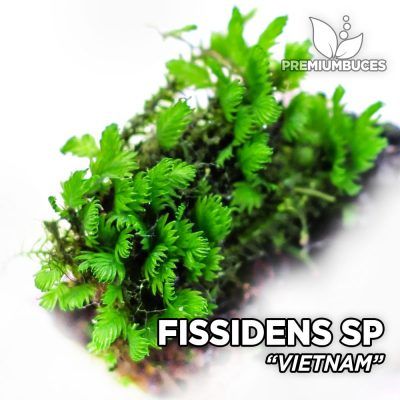
HABITAT
It can usually be found growing in rivers and lakes anchored to rocks or wood forming an extensive tapestry of small, compact, velvety shoots. While surrounded by a high humidity environment, can be seen growing normally out of the water, near streams of clean water and shaded areas.
In its natural state, Fissidens mosses They are quite sensitive to both temperature and light. In fact, they can survive during the summer and winter, but it turns brown with adverse conditions, when the weather improves, it re-sprouts its deep green color.
Some species of Fissidens, the rarest, can only be found in small areas or forests of the world, in small sections of a few hundred meters, that is why the vast majority of rare and difficult to find species they come from hobbyists who grow them in their own aquariums.
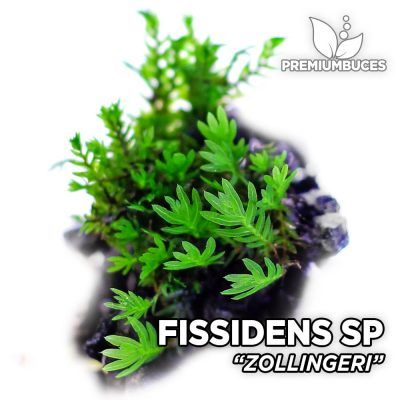
FISSIDENS PARAMETERS
The parameters of water preferred by Fissidens mosses are the following:
| Lighting design | Media |
| Temperature | 15nd - 25th |
| PH | 5.0 – 7.0 |
| Hardness |
Low |
| Co2 | Optional |
Like many mosses, the moss Fissidens tends to prefer the acidic and soft water to grow and develop in good conditions, they are mosses of slow growth very easy to maintain, but they do not like the sudden changes in the parameters of the water, being able to stop the growth rate or be affected in their health, getting rid of it, while we maintain the stable water parameters they will not need any special care, that is why they are so advisable as accompaniment in caridinas shrimp.
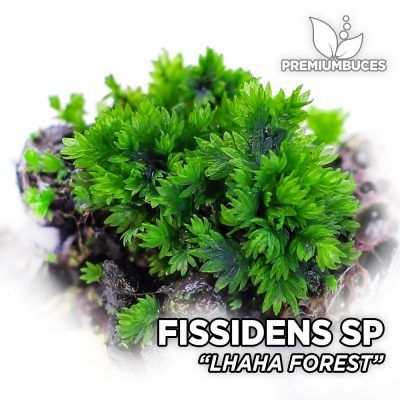
SPECIES OF FISSIDENS AND NAMES
Aquarium Fissidens names are usually trade names given for reference. taking into account its place of origin and distribution, rarely can you know exactly the origin of a moss with a commercial name, since it has probably been grown from aquarium to aquarium and shared by fans.
Other Fissidens species along with their commercial name they are:
Adianthoides
Amaria Taruya
Asplenioids
Borneo
Bryoids
Bucephalandra
chust
Crassipes
Dubius "Toshua Houougoke"
Exilis
Fontanus Fox "Fissidens Fox"
Fontanus Geppi "Fissidens Geppi"
Fontanus Long Leaf "Fissidens LL"
Fontanus "Phoenix Moss"
Geminifloros "Nagasaki"
grandifrons
Grandifrons "Planiccaulis"
himehougouke
iduki
incurves
India
Istvan
japonicus
Kalimantan
Khao sok
Lhaha forest
Malaysia
Mallorca
meenthully
Microphone
Mini
Mini Borneo
Mini chust
mini-java
Mini Nobilis
mini taiwan
Miroshaki
Nobilis
poland
poland II
Polyphyllus
Rivularis
sekadau
Sp. "I"
Sp. "II"
Sp. "III"
Splachnobryoides
Sulawesi
Switzerland
Tasikmalaya Province
Taxifolius
Thailand
Toshua "Houougoke"
Vietnam
zippelianus
zollingeri
Other articles of interest may be:
Bucephalandra - Care and File updated
Caridines and Neocaridines - File and Care Aquarium Prawns
Rate this post:
In our online store you can buy portions of Fissidens grown by ourselves and receive them within 24 hours in Spain.
Buy Fissidens
